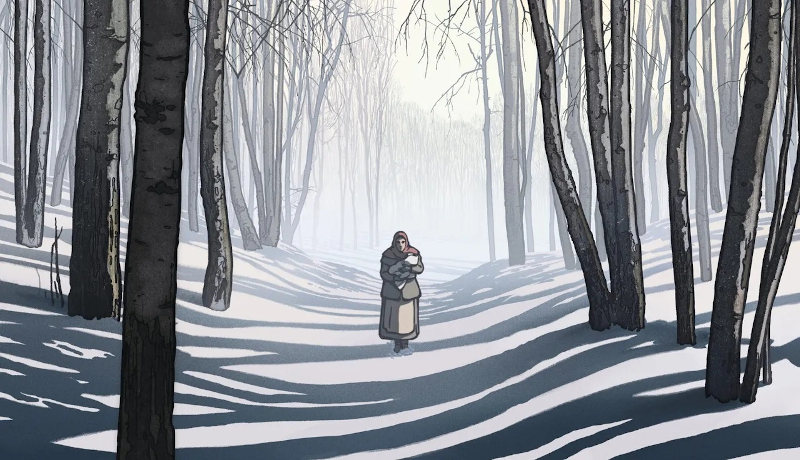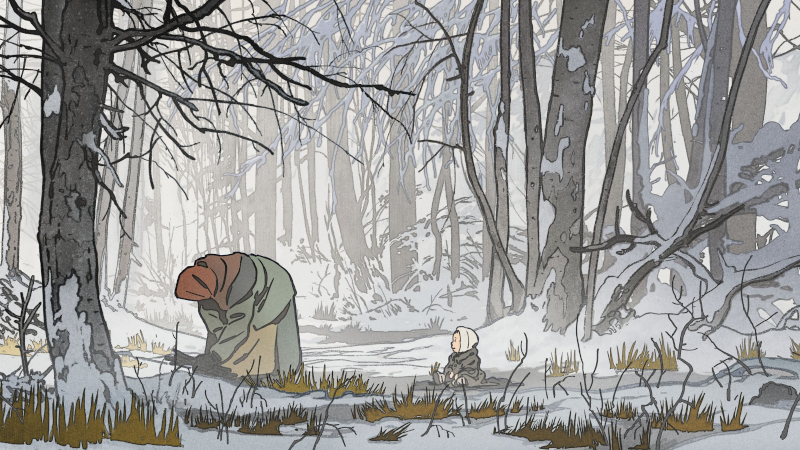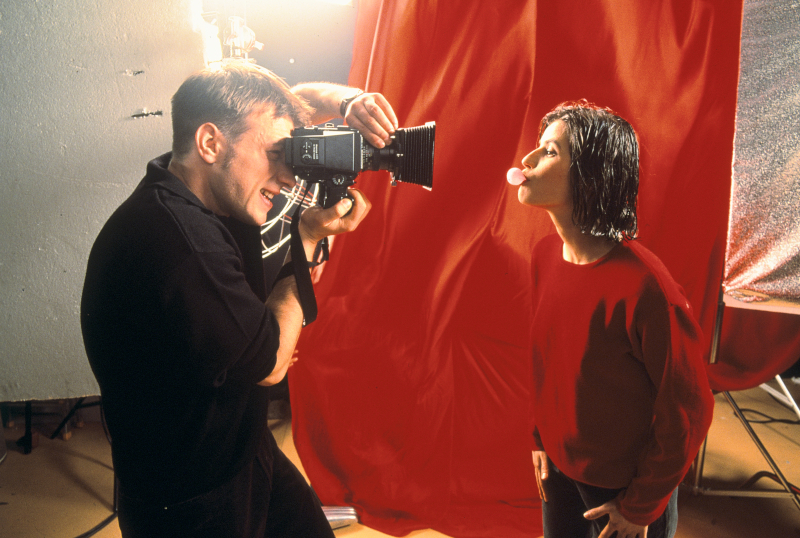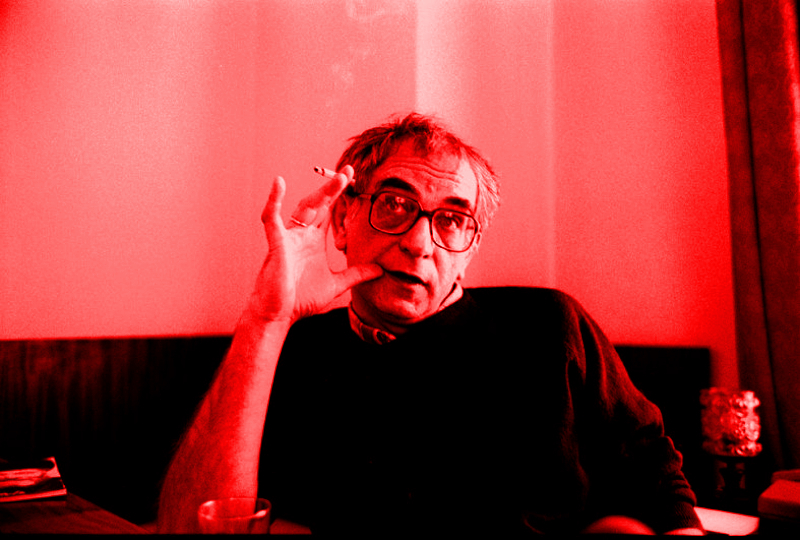Director – Michel Hazanavicius – 2024 – France – Cert. 12a – 81m
*****
In Winter in a forest, a poor woodcutter’s wife rescues an abandoned baby thrown from a passing train and, despite her husband’s misgivings, raises the girl as her own – out in UK and Ireland cinemas on Friday, April 4th
Once upon a time… In the woods through which many trains pass… In a war… Yes, that war… In Winter, when everything is under snow… The wife (voice: Dominique Blanc from La Reine Margot, Patrice Chéreau, 1994; Indochine, Régis Wargnier, 1992) of a poor woodcutter, unable to have children, is outside and prays to the Gods of the Trains. Whether they hear her and look upon her kindly, or whether they even exist, it’s impossible to say. Following her prayer, however, she hears the sound of a baby crying. How did the baby get there? Well, unbeknownst to the woman, a man in a goods wagon threw it out of a passing train. She locates the baby girl, takes it home, feeds it. It’s the child she never had.

Her husband, the woodcutter (voice: Grégory Gadebois from Everything Went Fine, François Ozon, 2021; Redoubtable, Michel Hazanavicius, 2017), on returning home, discovers the baby and is furious.… Read the rest


